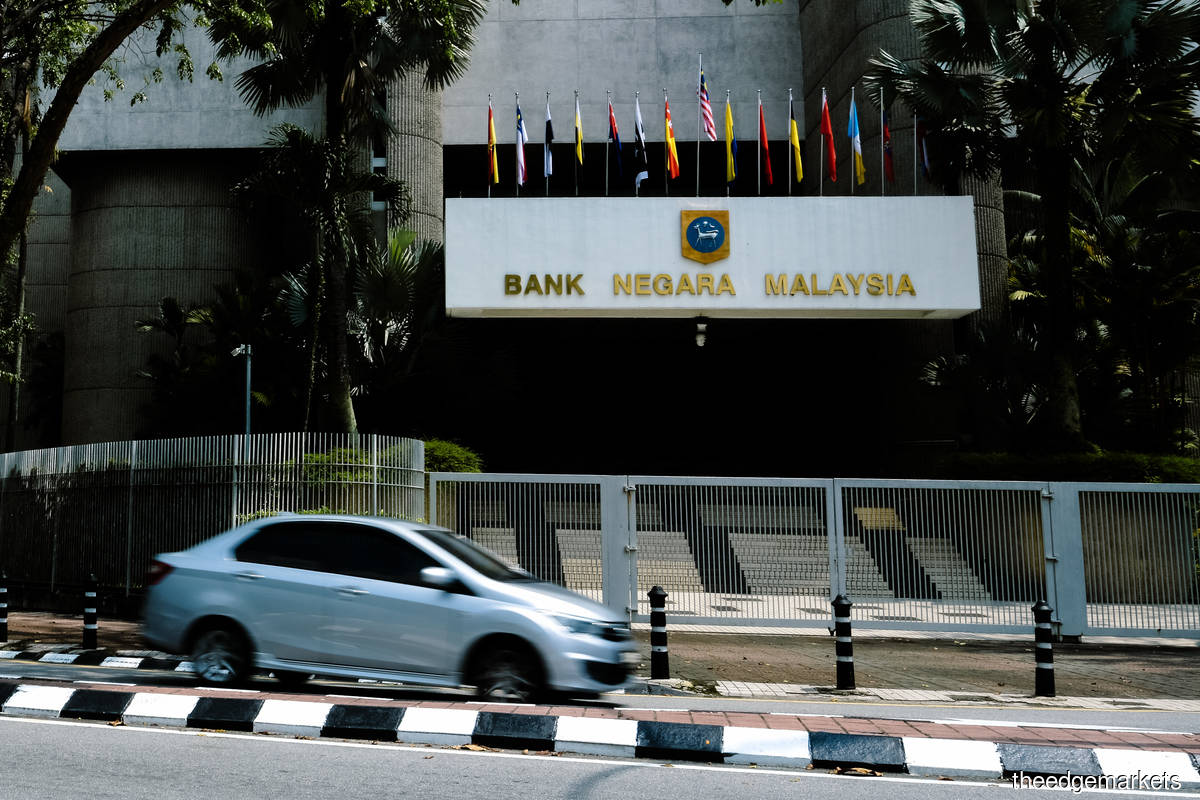BNM: M'sian banking system maintains strong liquidity, funding position

Malaysia's banking system continued to maintain a healthy liquidity position, recording a strong liquidity coverage ratio of 152.5% in September, a position that remained supportive of intermediation activities, said Bank Negara Malaysia (BNM).
马来西亚国家银行(BNM)表示,马来西亚的银行体系继续保持健康的流动性状况,9 月份流动性覆盖率高达 152.5%,这一状况仍然支持中介活动。
The central bank said Malaysian banks sustained deposit growth, riding on recovery in economic activities which continued to support banks’ lending activities, with the aggregate loan-to-fund ratio remaining stable at 82.5%, compared with 82.6% in August.
央行表示,大马银行的存款持续增长,得益于经济活动的复苏,继续支持银行的贷款活动,总贷款与资金比率保持稳定在 82.5%,而 8 月份为 82.6%。
In its monthly highlights — September 2022 report on 31st October, BNM shared that asset quality of the banking system also remained intact, with the overall gross impaired loan ratio broadly stable at 1.82% (August: 1.84%) and the net impaired loan ratio at 1.12% (August: 1.13%).
在10 月 31 日的 2022 年 9 月报告中,国行表示,银行系统的资产质量也保持不变,整体总减值贷款比率大致稳定在 1.82%(8 月:1.84%)和净减值贷款比率为 1.12%(8 月:1.13%)。
It noted that the loan loss coverage ratio, including regulatory reserves, also remained at a prudent level of 115.2% of impaired loans, with total provisions accounting for 1.8% of total loans, whereby as of end-September, the banking system recorded RM41.9 billion in total provisions and regulatory reserves.
它指出,包括监管准备金在内的贷款损失覆盖率也保持在115.2%的减值贷款的审慎水平,总拨备占总贷款的1.8%,截至9月底,银行系统录得41令吉。 90 亿总拨备和监管准备金。
However, it said net financing growth moderated in September, growing by 5.6% as at end-September (August: 6.1%), reflecting lower growth in outstanding loans of 6.4%, against 6.8% in August, and corporate bonds (3.5%; August: 4.3%).
然而,它表示 9 月净融资增长放缓,截至 9 月底增长 5.6%(8 月:6.1%),反映出未偿贷款增长 6.4%,低于 8 月的 6.8%,以及公司债券(3.5%; 8 月:4.3%)。
BNM said growth in outstanding household loans remained unchanged at 6.6%, reflecting steady growth across most purposes.
国行表示,未偿还家庭贷款的增长率保持不变,为 6.6%,反映出大多数用途的稳定增长。
“Despite some moderation, loan disbursements continued to record high growth amid sustained repayment trends.
“尽管有所放缓,但在持续的还款趋势下,贷款支付继续创下高增长。
“For businesses, growth in outstanding loans declined to 5.2% from 6.8% in August, partly due to a higher base effect. Nonetheless, loan disbursements remained sustained, driven particularly by the wholesale trade, consumer manufacturing, and civil engineering segments,” the central bank said.
“对于企业而言,未偿还贷款的增长率从 8 月份的 6.8% 下降至 5.2%,部分原因是基数效应较高。尽管如此,贷款支付仍然持续,尤其是在批发贸易、消费品制造和土木工程领域的推动下,”央行表示。
Meanwhile, BNM highlighted that domestic financial conditions tightened further in September, driven mainly by external developments.
与此同时,国行强调,主要受外部发展推动,9 月份国内金融状况进一步收紧。
In September, it said, global bond yields rose, equity markets declined, and the US dollar strengthened further, and this reflected expectations of further monetary policy tightening, especially by the US Federal Reserve, to address persistent inflationary pressures amid a more moderate global growth outlook.
报告称,9 月份全球债券收益率上升,股市下跌,美元进一步走强,这反映了对进一步收紧货币政策的预期,尤其是美联储将在全球增长较为温和的情况下应对持续的通胀压力外表。
Notwithstanding this, average trading volume and foreign exchange volatility in the domestic financial markets remained healthy, it noted.
尽管如此,它指出,国内金融市场的平均交易量和外汇波动仍然健康。
“The 10-year Malaysian Government Securities (MGS) yield continued to rise by 43 basis points (bps), compared with the regional average of 58 bps, which included countries like Singapore, Thailand, the Philippines, Indonesia and South Korea.
“10 年期马来西亚政府证券(MGS)收益率继续上涨 43 个基点(bps),而区域平均水平为 58 个基点,其中包括新加坡、泰国、菲律宾、印度尼西亚和韩国等国家。
“The FBM KLCI declined by 7.8% against the regional average of -6.9%, driven by non-resident portfolio outflows from the domestic bond and equity markets. The ringgit depreciated by 3.5% against the US dollar, compared with the regional average of -3.8%, amid continued strength of the US currency,” it said.
“受非居民投资组合从国内债券和股票市场流出的推动,富时隆综指下跌 7.8%,而区域平均水平为 -6.9%。由于美元持续走强,令吉兑美元贬值3.5%,而区域平均水平为-3.8%。”
On another note, BNM shared that wholesale and retail trade growth remained strong in August, with the index of wholesale and retail trade continuing to record a double-digit, though lower, growth of 27% (July: 33.4%).
另一方面,国行表示,8 月份批发和零售贸易增长依然强劲,批发和零售贸易指数继续录得两位数的增长,尽管较低,增长 27%(7 月:33.4%)。
“The strong growth was driven mainly by the motor vehicle segment. In addition to the low base in August 2021, when showrooms were closed during the implementation of the National Recovery Plan in the first half of the month, continued strength in purchases of motor vehicles also provided a lift to growth.
“强劲的增长主要是由机动车辆驱动的。 除了2021年8月的低基数外(在上半年实施国家复苏计划期间展厅关闭),汽车采购的持续强劲也提振了增长。
“This, together with stronger activity in the retail segment, contributed to an acceleration in month-on-month seasonally adjusted growth at 3.1% against -1.6% in July,” it said.
“这与零售领域的强劲活动一起,促使经季节性调整的环比增长加速至 3.1%,高于 7 月份的-1.6%,”它表示。
Meanwhile, BNM noted that headline inflation declined to 4.5% in September, from 4.7% in August, as lower inflation in the prices of fresh chicken, fresh vegetables and fuel more than offset higher core inflation.
与此同时,国行指出,整体通胀率从 8 月的 4.7% 下降至 9 月的 4.5%,因为新鲜鸡肉、新鲜蔬菜和燃料价格的较低通胀抵消了较高的核心通胀。
However, the central bank said core inflation increased to 4.0% during the month, versus 3.8% in the previous month, largely reflecting higher inflation in the prices for repair and maintenance of personal transport, food away from home, and bread and bakery products.
然而,央行表示,本月核心通胀率升至 4.0%,而前一个月为 3.8%,这主要反映了个人交通工具、离家食品以及面包和烘焙产品的维修和保养价格上涨。
It added that core inflation increased more moderately by 0.3% on a month-on-month basis against 0.6% in August.
它补充说,核心通胀环比增长 0.3%,高于 8 月份的 0.6%。
